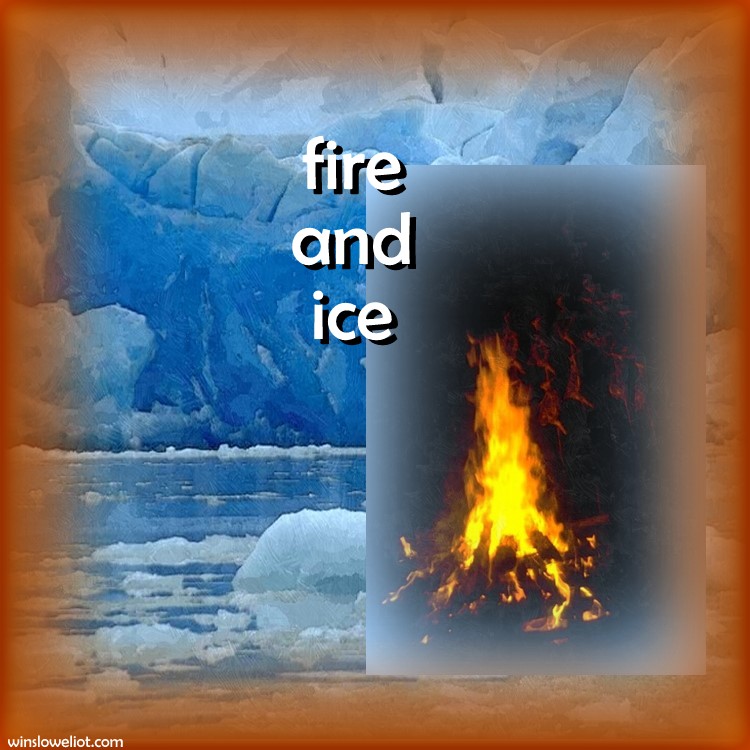
Stillness 10-30: Today I awoke to a world outside that is shrouded in icy snowy gray-white sleet. Inside, the world feels orange: orange from the glow of the fire, the glow of lamp, and the feeling of warmth. These polarities seem to be hammering at many of us just now as we edge closer to aspects in our lives that seem out of our control, like politics, disease, and winter, to name just three.
I have a feeling Robert Frost wrote his poem “Fire and Ice” on a day such as this. It’s very short:
Some say the world will end in fire
Some say in ice.
From what I’ve tasted of desire
I hold with those who favor fire.
But if it had to perish twice,
I think I know enough of hate
To say that for destruction ice
Is also great
And would suffice.
People say that the poem is a warning for us not to go to either extreme of emotions. But wouldn’t that be a bore? And is passion really heat and hatred ice? Are they even opposites or are they all woven from the same cloth: which is energy? Ice is not bad or good, and nor is fire. Both ice and the fire are neutral—they are simply different forms of energy. It’s only when energy becomes either blocked or out of control that it can sometimes be hard to manage.
An astronomer says that Robert Frost asked him how the world would end and he replied by either fire or ice: the sun will explode and incinerate us or the earth will slowly freeze in deep space. In other words, energy will either be out of control or it will become blocked. This happens to every one of us all the time. We die small deaths when we release blocked energy, whether it’s a crick in our neck from sleeping in a certain position or releasing a childhood trauma.
Moving through ice and fire and everything else we encounter, flowing freely with the warmth, the coziness, the fresh cold air outside, the tramp through the snowy woods, the friendly telephone call, the cat on the lap … whatever it is: the important thing is not to get stuck in it.
That’s the secret of well-being, and it’s not a secret.
